
Ion Antonescu was a Romanian military officer and marshal who presided over two successive wartime dictatorships as Prime Minister and Conducător during most of World War II.

The Iron Guard was a Romanian militant revolutionary fascist movement and political party founded in 1927 by Corneliu Zelea Codreanu as the Legion of the Archangel Michael or the Legionnaire Movement. It was strongly anti-democratic, anti-capitalist, anti-communist, and anti-Semitic. It differed from other European right-wing movements of the period due to its spiritual basis, as the Iron Guard was deeply imbued with Romanian Orthodox Christian mysticism.
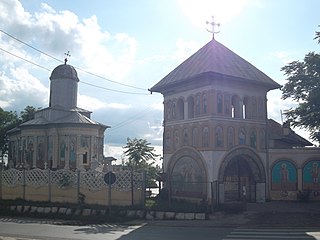
Jilava is a commune in Ilfov county, Muntenia, Romania, near Bucharest. It is composed of a single village, Jilava.
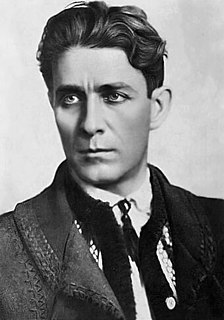
Corneliu Zelea Codreanu —born Corneliu Zelinski and commonly known as Corneliu Codreanu—was a Romanian politician of the far right, the founder and charismatic leader of the Iron Guard or The Legion of the Archangel Michael, an ultranationalist and violently antisemitic organization active throughout most of the interwar period. Generally seen as the main variety of local fascism, and noted for its mystical and Romanian Orthodox-inspired revolutionary message, it gained prominence on the Romanian political stage, coming into conflict with the political establishment and the democratic forces, and often resorting to terrorism. The Legionnaires traditionally referred to Codreanu as Căpitanul, and he held absolute authority over the organization until his death.

Armand Călinescu was a Romanian economist and politician, who served as 39th Prime Minister from March 1939 until his assassination six months later. He was a staunch opponent of the fascist Iron Guard and may have been the real power behind the throne during the dictatorship of King Carol II. He survived several assassination attempts but was finally killed by members of the Iron Guard with German assistance.
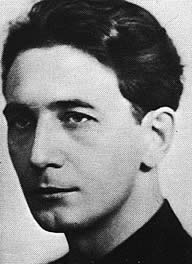
Horia Sima was a Romanian fascist politician, best known as the second and last leader of the fascist paramilitary movement known as the Iron Guard. Sima was also the vice president of the council of ministers and de facto co-leader in Ion Antonescu's National Legionary State. Sima had previously served briefly as State Secretary of Education under Gheorghe Tătărescu in 1940, and as a short-lived Minister of Religion and Arts in the government of Ion Gigurtu.

Gheorghe I. Tătărescu was a Romanian politician who served twice as Prime Minister of Romania, three times as Minister of Foreign Affairs and once as Minister of War (1934). Representing the "young liberals" faction inside the National Liberal Party (PNL), Tătărescu began his political career as a collaborator of Ion G. Duca, becoming noted for his anticommunism and, in time, for his conflicts with the PNL's leader Dinu Brătianu and the Foreign Minister Nicolae Titulescu. During his first time in office, he moved closer to King Carol II and led an ambivalent policy toward the fascist Iron Guard and ultimately becoming instrumental in establishing the authoritarian and corporatist regime around the National Renaissance Front. In 1940, he accepted the cession of Bessarabia and Northern Bukovina to the Soviet Union and had to resign.

Ion Mihalache was a Romanian agrarian politician, the founder and leader of the Peasants' Party (PȚ) and a main figure of its successor, the National Peasants' Party (PNȚ).

Constantin Argetoianu was a Romanian politician, one of the best-known personalities of interwar Greater Romania, who served as the Prime Minister between 28 September and 23 November 1939. His memoirs, Memorii. Pentru cei de mâine. Amintiri din vremea celor de ieri —a cross section of Romanian society, were made known for the sharp critique of several major figures in Romanian politics.
The Romanian Social Democratic Party was a social-democratic political party in Romania. In the early 1920s, the Socialist Party of Romania split over the issue of affiliation with the Third International. The majority, which supported affiliation, evolved into the Communist Party of Romania in 1921, while the members who opposed the new orientation formed various political groupings, eventually reorganizing under a central leadership in 1927. From 1938 to 1944, the party was outlawed but remained active in clandestinity. After 1944, it allied with the Communists and eventually was forced to reunite with them to form the Workers' Party of Romania in 1948. It published the magazines Socialismul, Lumea Nouă, and Libertatea. After the end of the Communist single-party system in 1989, a group of former members created a new party which proclaimed itself the direct descendant of the PSD.
Iosif Constantin Drăgan was a Romanian and Italian businessman, writer, historian and founder of the ButanGas company. In 2005, he was the second-wealthiest Romanian, according to the Romanian financial magazine Capital, having a wealth estimated at $850 million. According to the same financial magazine, in 2006, he became the wealthiest Romanian, at $1.3-1.6 billion.

The National Legionary State was a totalitarian fascist regime which governed Romania for five months, from 14 September 1940 until its official dissolution on 14 February 1941. The regime was led by General Ion Antonescu in partnership with the Iron Guard, the Romanian ultranationalist, antisemitic and anti-communist organisation. Though the Iron Guard had been in the Romanian Government since 28 June 1940, on 14 September it achieved dominance, leading to the proclamation of the National Legionary State.
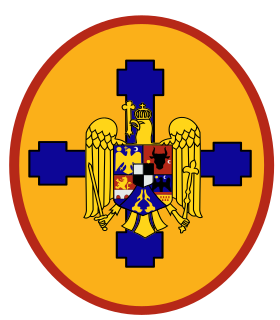
The National Renaissance Front was a Romanian political party created by King Carol II in 1938 as the single monopoly party of government following his decision to ban all other political parties and suspend the 1923 Constitution, and the passing of the 1938 Constitution of Romania. It was the party of Prime Ministers Armand Călinescu, Gheorghe Argeșanu, Constantin Argetoianu, Gheorghe Tătărescu and Ion Gigurtu, whose regimes were associated with corporatism and antisemitism. Largely reflecting Carol's own political choices, the FRN was the last of several attempts to counter the popularity of the fascist and antisemitic Iron Guard. In mid-1940, Carol reorganized the FRN into the more radical Party of the Nation, designed as a "totalitarian unity party". The party's anthem was "Pe-al nostru steag e scris Unire". It effectively ceased to function the following year when the Parliament of Romania was dissolved.

The Jilava massacre took place during the night of November 26, 1940, at Jilava penitentiary, near Bucharest, Romania. Sixty-four political detainees were killed by the Iron Guard (Legion), with further high-profile assassinations in the immediate aftermath. It came about halfway through the fascist National Legionary State and led to the first open clash between the Guard and conducător Ion Antonescu, who ousted the Legion from power in January 1941.
Dumitru Coroamă was a Romanian soldier and fascist activist, who held the rank of major general of the Romanian Army during World War II. He was especially known for his contribution to the 1940 establishment of the National Legionary State by the far-right Iron Guard, with which he had been secretly involved for a decade. After beginnings as a schoolteacher in his native Neamț County, Coroamă had become an officer of the 15th Dorobanți Regiment, first earning distinction during World War I. Coroamă helped organize the defense of Western Moldavia, then participated in the Hungarian–Romanian War, establishing Romanian control in Bistrița and Baia Mare. He received the Order of the Star of Romania and the Order of Michael the Brave.
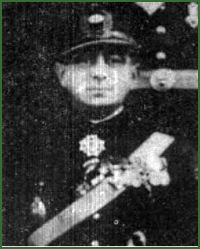
Constantin Petrovicescu was a Romanian soldier and politician, who served as Interior Minister from September 14, 1940 to January 21, 1941 during the National Legionary State.

The relationship between the Romanian Orthodox Church and the Iron Guard was one of ambivalence. The Romanian Orthodox Church promoted its own version of nationalism which highlighted the role of Orthodoxy in preserving the Romanian identity. Starting with the 1920s, the Church became entangled with fascist politics and antisemitism. In this context, the Iron Guard, also known as the Legion of the Archangel Michael, a fascist movement founded in 1927, became very influential with church grassroots. Numerous rank-and-file priests joined the Iron Guard ranks and actively supported its policies; so did a minority of influential high-ranking clergymen such as Nicolae Bălan or Vartolomeu Stănescu.
Constantin "Tică" David was a Romanian communist activist and anti-fascist militant assassinated by the fascist Iron Guard during the Legionnaires' rebellion.

Armand Călinescu, at the time the Prime Minister of Romania, was assassinated on 21 September 1939, aged 46, in Bucharest by Iron Guard members under the direct leadership of Horia Sima. This was the culmination of several assassination attempts against him, which included an attack on the Romanian Athenaeum and bombing a bridge over the Dâmboviţa River — both of which were uncovered by police. Călinescu was on a secret blacklist at the same time as Nicolae Titulescu, Dinu Brătianu, and General Gabriel Marinescu.
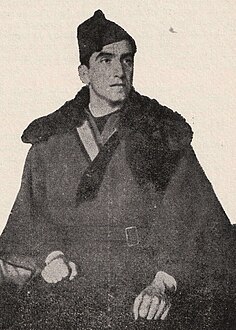
Prince Alexandru Cantacuzino was a Romanian lawyer and politician, a leading member of the Legionary Movement, and a close collaborator of Legionary leader Corneliu Zelea Codreanu. He notably devised a plot to overthrow Carol II, King of Romania, a plan that would later be taken over by Legionary leader and later Vice President of the Council of Ministers Horia Sima. Cantacuzino was killed on September 22, 1939, at the prison in Râmnicu Sărat, during a retaliation operation ordered by Carol II following the assassination of Prime Minister Armand Călinescu.















